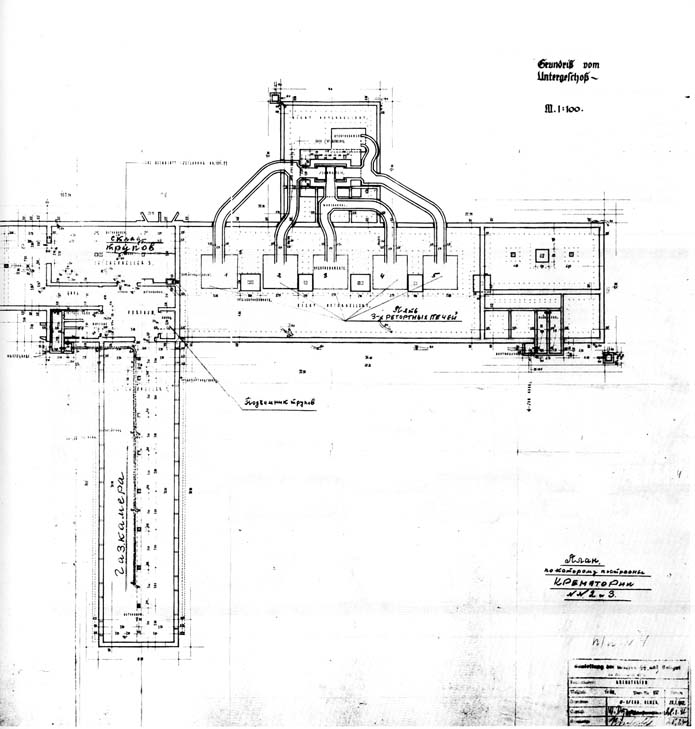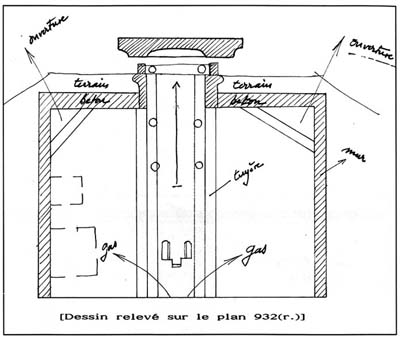| Drawing 932 (r) |
 |
|
 |
Photo B
Schematic diagram of Zyklon-B introduction system taken from drawing 932(r) |
|
| Translation of inscriptions: |
| · |
Ouverture /Opening [fresh air duct] |
|
| · |
Terrain / Earth |
|
| · |
Beton / Concrete |
|
| · |
Tuyère /Tube |
|
| · |
Mur / Wall |
|
This sketch, found on the bottom left of 932(r), is inversed with respect to the German inscriptions. The inscriptions on the sketch, which is a cross section of Leichenkeller 1, the gas chamber, of Krematorium II, are written in French This may be because in January 1945, the Soviet Commission investigating the crimes committed in Auschwitz Birkenau called upon educated former prisoners of various nationalities to act as consultants and explain the way the gas chambers worked, as this was not fully understood at that time. The Soviet film, “Chronicles of the Liberation of the camp, 1945” shows a group or medical men and academics, still in their prison uniform, guiding members of the Soviet Commission. Among them was a French doctor. Henri Limousin, who is perhaps the author of this sketch.
From the historical standpoint, this view of a gas introduction “tube” is valid in its general principle, but inexact in its structure, which has been known precisely since the testimony of Michal Kula, a former prisoner having worked in the DAW metalworking shop, where the wire mesh Zyklon-B introduction columns were made. Two versions were produced, one where the gas was diffused from the lower part and the other from the upper part. |
|

